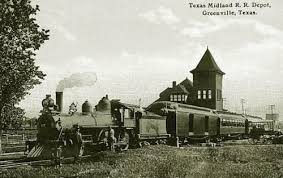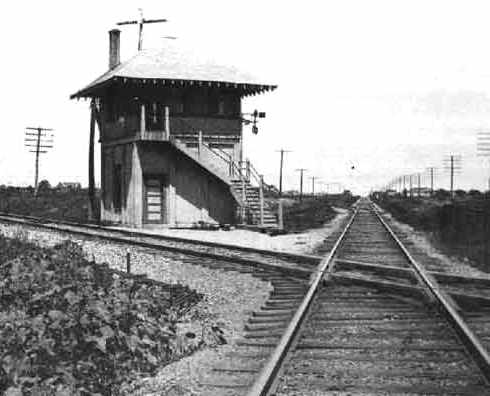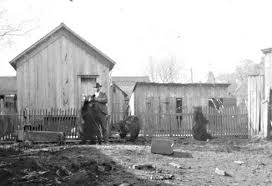For “Foodie Friday”:
How Fiber Helps Control Cholesterol
“A diet for high cholesterol calls for more than trimming the fat. Find out how foods high in fiber can help you keep cholesterol in check.
Eating certain foods, such as those high in saturated fats, can increase harmful cholesterol levels, but what you eat can also play a positive role in your cholesterol levels. For one, eating fiber-rich foods can actually help lower cholesterol.

What’s clear is that the cholesterol-controlling benefits are due to soluble fiber, one of two types of fiber. Soluble fiber is found in the flesh of fruit such as pears and apples, vegetables like peas, and whole grains, such as oats and barley. The second important type of fiber, insoluble fiber, is indigestible and also a necessary part of a healthy diet, but not for controlling cholesterol — it’s the kind that helps with digestion.
Types of Fiber
Although there are several forms of fiber, they can be classified into two major groups: soluble fiber and insoluble fiber. While both are good for the body, only one group has been shown to be beneficial in lowering your cholesterol.Soluble fiber can be dissolved in water and forms a gel-like consistency in the digestive tract. On the other hand, insoluble fiber cannot be dissolved in water, so it passes through the digestive tract relatively unchanged. When it comes to your heart health, it appears that only soluble fiber is beneficial in lowering your cholesterol. In fact, studies have shown that consuming 10 to 25 grams soluble fiber a day can lower cholesterol by 18%.
High-fiber foods that contain soluble fiber appear to affect short-chain fatty acids in the bloodstream,” Van Horn says. “Soluble fiber has the same sort of potential benefit that something like a cholesterol-lowering (statin) drug would have, where it blocks the uptake of saturated fat or other harmful types of fat.” Soluble fiber may also help reduce insulin resistance, which seems to play a role in unhealthy cholesterol levels. “Fiber appears to have beneficial effects on both lipid and glucose metabolism,” Van Horn says. This can improve your overall lipid or “fat” profile, resulting in healthier cholesterol levels as well as lower triglyceride levels, another type of fat in the blood.
Diet for High Cholesterol: Food High in Fiber
Your daily goal should be 25 to 30 grams of fiber, but most people don’t even get 25 percent of that, Van Horn says. Try adding these high-fiber foods to your diet:
- Oat bran: 1 cup has 14.5 grams of fiber
- Rice bran: 1 cup has 24.8 grams of fiber
- Celery: 1 cup chopped has about 1.6 grams of fiber
- Carrots: 1 cup chopped has about 3.6 grams of fiber
- Beans: ½ cup has between 6 and 10 grams of fiber
- Peas: ½ cup has between 5 and 8 grams of fiber
- Pears: One medium fruit has about 5.5 grams of fiber
- Orange: One medium fruit has about 3.1 grams of fiber
- Barley: ½ cup cooked grain has about 3 grams of fiber
- Steel cut oats: ¼ cup dry oats has about 4 grams of fiber
- Almonds: 1 ounce has about 3.5 grams of fiber
Need some ideas for getting fiber into your diet each day? Try these tips:
- Snack on dried or whole fruits or veggies.
- Load up on vegetables and beans in casseroles and soups.
- When baking, use whole-grain flours to replace part or all of the white flour.
- Make hot cocoa from scratch with milk and cocoa powder, which contains fiber.
- Pick high-fiber options over high-fat options — for example, add beans to a burrito instead of cheese and sour cream.
Fiber supplements may be helpful for other health concerns, such as better digestion, but to lower cholesterol with fiber, your best bet is a varied diet of whole foods containing fiber.” From: http://www.everydayhealth.com/health-report/healthy-living-with-high-cholesterol/how-fiber-helps-control-cholesterol.aspx
_______
Cancer cells slurp up fructose, US study finds
* Study shows fructose used differently from glucose
* Findings challenge common wisdom about sugars
WASHINGTON Aug 2 (Reuters) - “Pancreatic tumor cells use fructose to divide and proliferate, U.S. researchers said on Monday in a study that challenges the common wisdom that all sugars are the same. Tumor cells fed both glucose and fructose used the two sugars in two different ways, the team at the University of California Los Angeles found.
"These findings show that cancer cells can readily metabolize fructose to increase proliferation," Dr. Anthony Heaney of UCLA's Jonsson Cancer Center and colleagues wrote. "They have major significance for cancer patients given dietary refined fructose consumption, and indicate that efforts to reduce refined fructose intake or inhibit fructose-mediated actions may disrupt cancer growth."
Americans take in large amounts of fructose, mainly in high fructose corn syrup, a mix of fructose and glucose that is used in soft drinks, bread and a range of other foods. Several states, including New York and California, have weighed a tax on sweetened soft drinks to defray the cost of treating obesity-related diseases such as heart disease, diabetes and cancer.
The industry has also argued that sugar is sugar.
Heaney said his team found otherwise. They grew pancreatic cancer cells in lab dishes and fed them both glucose and fructose. Tumor cells thrive on sugar but they used the fructose to proliferate. "Importantly, fructose and glucose metabolism are quite different," Heaney's team wrote.
"I think this paper has a lot of public health implications. Hopefully, at the federal level there will be some effort to step back on the amount of high fructose corn syrup in our diets," Heaney said in a statement.”
More at: http://www.reuters.com/article/2010/08/02/cancer-fructose-idAFN0210830520100802
--------
How cancer feeds on sugar (and other big reasons to avoid refined sweets)
“Not only is sugar the primary source of excess calories in the United States, but the latest research also shows that cancer cells lap up high-fructose corn syrup, adding yet another reason to avoid it.
A couple of years ago, researchers from the University of California-Los Angeles found that pancreatic tumor cells use fructose to divide and reproduce, debunking earlier assumptions that all sugars were the same.
Tumor cells that were fed glucose and fructose used those sugars in two different ways, the research team said.” Learn more: http://www.naturalnews.com/038071_cancer_sugar_sweets.html#ixzz2DecWEWf2
----------
Cancer Feeds on Fructose, America's #1 Source of Calories
“High-fructose corn syrup is the primary source of calories in the United States. In addition to containing mercury, a known carcinogen, cancer cells actually feed on high-fructose corn syrup after it is metabolized by the liver.
 A recent study, published in the Expert Opinion on Therapeutic Targets, examined the link between refined sugar and cancer. The results add further evidence to the reports of many health experts and scientific studies that have drawn the connection between excess sugar consumption and the development of cancer.” More at: : http://www.greenmedinfo.com/blog/cancer-feeds-fructose-america%E2%80%99s-1-source-calories
A recent study, published in the Expert Opinion on Therapeutic Targets, examined the link between refined sugar and cancer. The results add further evidence to the reports of many health experts and scientific studies that have drawn the connection between excess sugar consumption and the development of cancer.” More at: : http://www.greenmedinfo.com/blog/cancer-feeds-fructose-america%E2%80%99s-1-source-calories
_______
We Don't Have a Cure for Cancer Yet - or Do We?
The Stunning Effect of This Single Vitamin on CANCER...
‘What if a cure for cancer has been right here all along? What if the very agency charged with protecting your health is the one keeping you from that cure?
A Lawless, Rogue Agency Out of Control
Ten years ago a former New York State assemblyman, Daniel Haley, wrote a scathing exposé on how the US Food and Drug Administration (FDA) systematically shuts the door on effective and non-toxic products, many for cancer.
 The FDA is the chief agency in charge of protecting and promoting Americans' health and safety. But in 10 stunning, true stories in his book, "The Politics of Healing," Haley describes how the FDA has suppressed and banned natural health cures – eight of them for cancer. He later wrote about two additional cancer cures that worked, which the FDA also disallowed.
The FDA is the chief agency in charge of protecting and promoting Americans' health and safety. But in 10 stunning, true stories in his book, "The Politics of Healing," Haley describes how the FDA has suppressed and banned natural health cures – eight of them for cancer. He later wrote about two additional cancer cures that worked, which the FDA also disallowed.
'Virtually Every' Drug Company Now Targeting Cancer Therapies
Today, the FDA continues to serve its client, Big Pharma, by making sure that toxic chemotherapy, along with surgery and radiation, are the only cancer treatment options legally available to you. This industry is huge, with 139 cancer treatment drugs in the pipeline just for women alone. All told there are over 900 experimental cancer therapies under investigation. No wonder so many pharmaceutical companies are ramping up their cancer drug research!
According to the New York Times:
"Virtually every large pharmaceutical company seems to have discovered cancer, and a substantial portion of the smaller biotechnology companies are focused on it as well. Together, the companies are pouring billions of dollars into developing cancer drugs."
The Truth about Vitamin D
Everyone's talking about vitamin D right now, especially since the Institute of Medicine's Food and Nutrition Board (FNB) updated their recommended dietary allowance (RDA) for it. The truth is that most Americans are deficient in vitamin D, and studies show that vitamin D supplementation can both prevent and kill many infections and diseases, including cancer.
Vitamin D isn't actually a vitamin, although scientists refer to it as such. It's actually a steroid hormone that you get from sun exposure, food sources and/or supplementation. The term refers to either vitamin D2 or D3, but according to the National Vitamin D Council, D3 (chemical name 25-hydroxy vitamin D) is real vitamin D, and is the same substance produced naturally through your skin by sun exposure.
Experts Protest 'Impossible' New RDA Levels
Depending on your age, the new recommendations are 600 to 800 IUs a day for adults and between zero and 600 IUs a day for children. The FNB also said that taking vitamin D in amounts of 10,000 IUs or more could be dangerous – but that's ridiculous, seeing that a 30-minute dose of sunshine can give an adult more than 10,000 IUs! Since countless studies indicate that much higher levels of vitamin D are required for optimal health, it's no surprise that experts lost no time denouncing the FNB's recommendations, as it is almost impossible to significantly raise your vitamin D levels when supplementing at only 600 IU/day (15 micrograms).
Dr. Heaney is widely believed to be one of the most prominent and well respected researchers on vitamin D. He's authored more than 400 vitamin D papers in his lifetime, including the 2007 cancer study that showed a full 77 percent of all cancers could be prevented with a vitamin D level of at least 40 ng/ml. Complete article at: http://articles.mercola.com/sites/articles/archive/2011/08/06/why-we-dont-have-a-cure-for-cancer-yet-or-do-we.aspx
______
On This Day:
Meteorite strikes Alabama woman, Nov 30, 1954:
“The first modern instance of a meteorite striking a human being occurs at Sylacauga, Alabama, when a meteorite crashes through the roof of a house and into a living room, bounces off a radio, and strikes a woman on the hip. The victim, Mrs. Elizabeth Hodges, was sleeping on a couch at the time of impact. The space rock was a sulfide meteorite weighing 8.5 pounds and measuring seven inches in length. Mrs. Hodges was not permanently injured but suffered a nasty bruise along her hip and leg.
Ancient Chinese records tell of people being injured or killed by falling meteorites, but the Sylacauga meteorite was the first modern record of this type of human injury. In 1911, a dog in Egypt was killed by the Nakhla meteorite.”
______
Brady Bill signed into law, Nov 30, 1993:
“During a White House ceremony attended by James S. Brady, President Bill Clinton signs the Brady handgun-control bill into law. The law requires a prospective handgun buyer to wait five business days while the authorities check on his or her background, during which time the sale is approved or prohibited based on an established set of criteria.
In 1981, James Brady, who served as press secretary for President Ronald Reagan, was shot in the head by John Hinckley, Jr., during an attempt on President Reagan's life outside a hotel in Washington, D.C. Reagan himself was shot in his left lung but recovered and returned to the White House within two weeks. Brady, the most seriously injured in the attack, was momentarily pronounced dead at the hospital but survived and began an impressive recovery from his debilitating brain injury.
During the 1980s, Brady became a leading proponent of gun-control legislation and in 1987 succeeded in getting a bill introduced into Congress. The Brady Bill, as it became known, was staunchly opposed by many congressmen, who, in reference to the Second Amendment to the U.S. Constitution, questioned the constitutionality of regulating the ownership of arms. In 1993, with the support of President Bill Clinton, an advocate of gun control, the Brady Bill became law.
______
Achille Lauro sinks near Somalia, Nov 30, 1994:
“The Achille Lauro cruise ship catches fire and sinks to the bottom of the sea near Somalia on this day in 1994. The large luxury liner had a checkered history that included deaths and terrorism prior to its sinking.
The construction of the Willem Ruys by the Royal Rotterdam Lloyd Line took more than 10 years. The completed ship, which weighed in at 24,000 gross tons and was launched in 1947, was used to carry passengers and cargo back and forth from the Netherlands to the East Indies. In the 1960s, it was primarily used to carry immigrants to Australia. In 1965, the StarLauro company bought the ship to add it to its cruise line.
In 1971, the ship, re-named Achille Lauro, rammed an Italian fishing boat in the Mediterranean Sea, killing one person. Ten years later, a fire on board the ship killed two people. The most infamous incident in the history of the Achille Lauro, though, occurred in 1985, when it was hijacked by Palestinian terrorists who shot and killed an American passenger, Leon Klinghoffer.
In 1994, the Achille Lauro was carrying 1,000 passengers near the Horn of Africa when a fire broke out on board. The lifeboats were launched as the fire caused the huge ship to list to the port side. A tug boat was sent to bring it back to shore, but as the tug was trying to connect to the ship, there was a huge explosion. Two people died and the Achille Lauro sank to the bottom of the ocean.
The survivors in the lifeboats were picked up by the USS Gettysburg. The Achille Lauro's two sister ships, the Lakonia and the Angelina Lauro, also fell victim to on-board fires.”
______
Yesterday:
Jay’s sister was coming to visit him and their mother, so finishing the repair on Ray’s floor in my guest house, was postponed once again.
I was relieved, as I had been up with Misty during the night as she wasn’t feeling well, and wanted to go outside. (TMI I know, but she will not throw up in the house.) Then I remembered that she had eaten some of the kitten’s food and some smoked turkey, so either one could have caused it. This has happened before, when she got into some canned cat food. I fed her some canned pumpkin, and now she seems better, ….I hope. The cats are fed where she can’t get at it, but a phone call had distracted me, and she will eat anything that doesn’t eat her first!! I am glad really though, as I wouldn’t want a persnickety dog like Jay’s.
Well, it seems that HP was as good as their word, they sent me a tracking number, and the replacement printer is on it’s way here to TX.
But the payment that I paid at the bank in cash when their computers were down, is still not posted. So more time was spent following up on that.
Our SPCA is going to have a permanent cat habitat at Petco in Conroe, so we rounding up volunteers for that. Each trained volunteer will spend 2 hours a week tending to our cats, and we have to make sure we have all shifts covered. The cats won’t live there permanently, and will be switched out, but now they won’t be on display just two Saturday afternoons a month. We might run short of cats! Though I doubt it, there seem to be more in need of good homes every day.
 Transmission temperatures run generally in the same range as engine temperature until put under a strain. Heat in the transmission will
Transmission temperatures run generally in the same range as engine temperature until put under a strain. Heat in the transmission will  “An innovative product idea from the Lug_Nut file. Automatic transmissions are quickly replacing the mechanically clutched manual gearbox in the world’s high performance automobiles. While many are equipped with single or dual action hydraulic clutches, all are capable of shifting gears automatically. For the positive control of spirited performance shifting, these newer systems employ steering wheel mounted paddle switches. These spring loaded momentary contact levers are located behind the wheel at about nine and three o’clock. They are easily operated with your fingertips while your hands are comfortably gripping the steering wheel. The left one toggles the downshift while the right the upshift. The main transmission control provides a selection of either fully automatic or paddle control shifting. The automatic or manual modes can also be toggled back and forth on some models using just the paddles.
“An innovative product idea from the Lug_Nut file. Automatic transmissions are quickly replacing the mechanically clutched manual gearbox in the world’s high performance automobiles. While many are equipped with single or dual action hydraulic clutches, all are capable of shifting gears automatically. For the positive control of spirited performance shifting, these newer systems employ steering wheel mounted paddle switches. These spring loaded momentary contact levers are located behind the wheel at about nine and three o’clock. They are easily operated with your fingertips while your hands are comfortably gripping the steering wheel. The left one toggles the downshift while the right the upshift. The main transmission control provides a selection of either fully automatic or paddle control shifting. The automatic or manual modes can also be toggled back and forth on some models using just the paddles.

 Bill's Hints
Bill's Hints Volkswagen will finally end production this December of its Kombi model, better known in the U.S. as the "VW Bus." The last bus will roll off a Brazilian production line, the victim of tougher safety standards. Kombi was the second of VW's creations (the "Bug" was first) and has been in production for 63 years.
Volkswagen will finally end production this December of its Kombi model, better known in the U.S. as the "VW Bus." The last bus will roll off a Brazilian production line, the victim of tougher safety standards. Kombi was the second of VW's creations (the "Bug" was first) and has been in production for 63 years.








 Kittlitz's Murrelet
Kittlitz's Murrelet




 tune in Greenville.
tune in Greenville. 






















